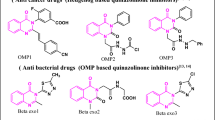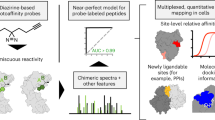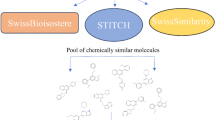Abstract
CHYMOTRYPSIN displays both esterase and proteolytic activity, and it has recently been shown1 that this enzyme is inhibited by diisopropyl fluorophosphonate and that loss of esterase activity is paralleled by loss of proteolytic activity. Diethyl p-nitrophenyl phosphate (E.600) resembles diisopropyl fluorophosphonate in being a very powerful anticholinesterase. We have found that it will also inhibit chymotrypsin, and have been studying the system chymotrypsin–diethyl p-nitrophenyl phosphate as a convenient model for other esterase systems, since the physical data for this enzyme (purity, molecular weight, etc.) are among the more accurately known.
This is a preview of subscription content, access via your institution
Access options
Subscribe to this journal
Receive 51 print issues and online access
$199.00 per year
only $3.90 per issue
Buy this article
- Purchase on SpringerLink
- Instant access to full article PDF
Prices may be subject to local taxes which are calculated during checkout
Similar content being viewed by others
References
Jansen, E. F., Nutting, M. D. F., Jang, R., and Balls, A. K., J. Biol. Chem., 179, 189 (1949).
Anson, M. L., J. Gen. Physiol., 22, 207 (1938).
Jansen, E. F., Nutting, M. D. F., and Balls, A. K., J. Biol. Chem., 179, 201 (1949).
Author information
Authors and Affiliations
Rights and permissions
About this article
Cite this article
HARTLEY, B., KILBY, B. Inhibition of Chymotrypsin by Diethyl p-Nitrophenyl Phosphate. Nature 166, 784–785 (1950). https://doi.org/10.1038/166784a0
Issue date:
DOI: https://doi.org/10.1038/166784a0
This article is cited by
-
The structural basis for catalysis and substrate specificity of a rhomboid protease
The EMBO Journal (2010)



